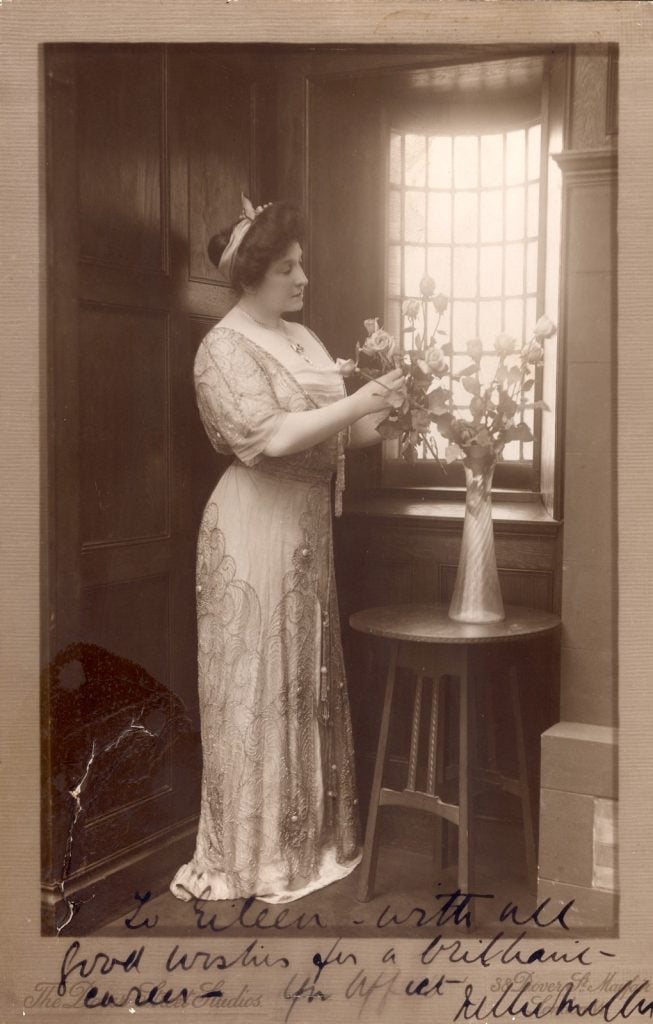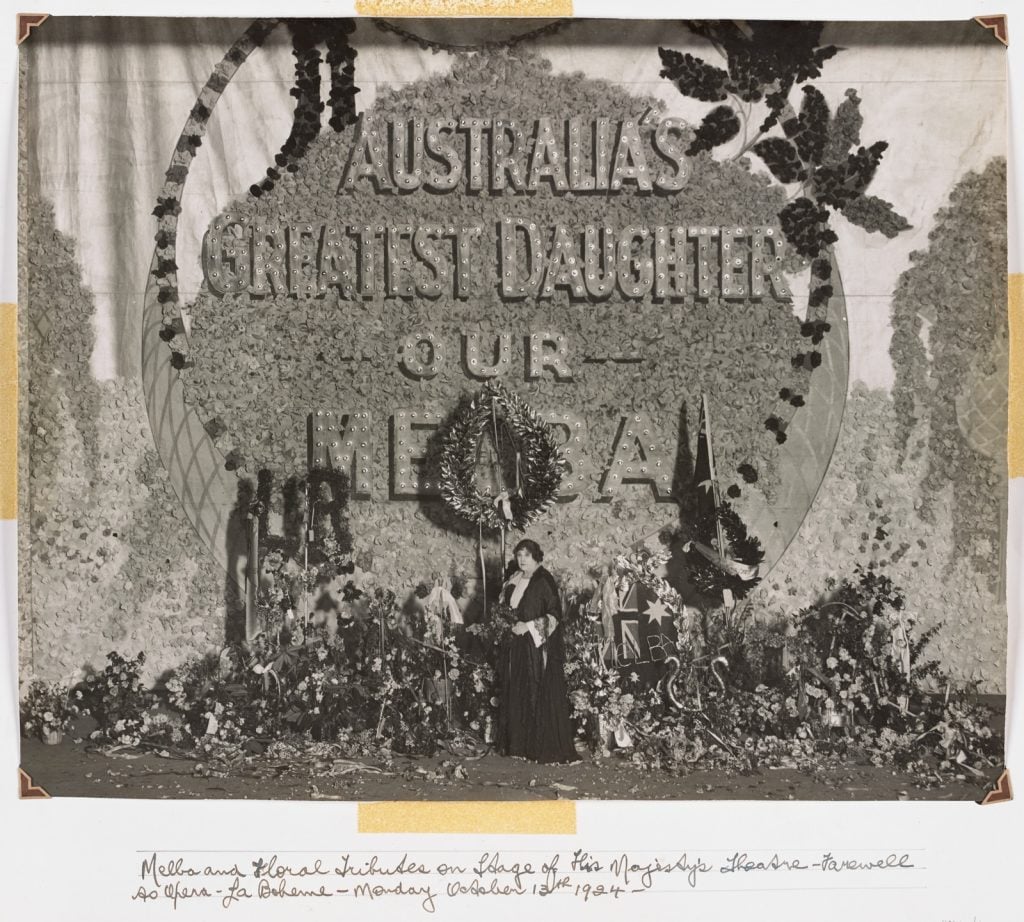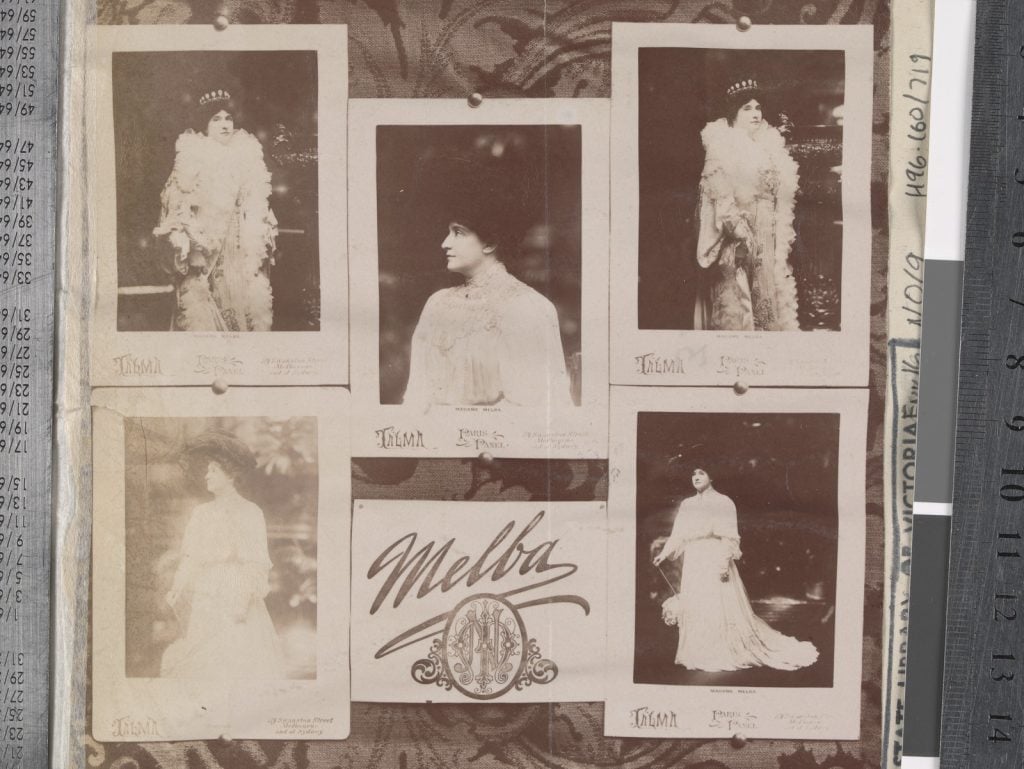She was a legend in every possible way: her voice of an angelic purity and perfect pitch, her fame never equaled by another Australian singer, a fame which extended worldwide from the time of her international debut in Brussels in 1887 until the late 1920s when she staged her final performances.1

Dame Nellie Melba (1861-1931), prima donna, was born Helen Porter Mitchell on 19 May 1861 at Richmond, Melbourne. “Helen Porter Mitchell was an unusually naughty child; incorrigible, unreasonable and unmanageable, incapable of behaving even by accident.”2 These are her own words. So, we can imagine that any attempts by her father to stop her from such a “nonsense” as singing, were in vain. She would not take NO for an answer. And good on her!
In the 19th century, Melba’s name was known in countries she had never visited, and she inspired young singers around the world to seek their dream and never give up. She was a daughter of Melbourne and she put the city, and Australia as a whole, on the map of the grand opera.

Melba was referred to as the Queen of Song, and she was treated as such. The public loved her (the way in which Melbourne still loves music today – something which is mesmerising to me, as a new Melbournian), from queens and emperors, to the miners in the Victorian goldfields, to the cane cutters in Northern Queensland.3 “They all call me the Australian nightingale”4 she wrote to her teacher, the Italian tenor Pietro Cecchi, after performances in Sydney.

Melba made her début as an opera singer at the Théâtre Royal de la Monnaie in Brussels, on 13 October 1887. At the beginning of her career Melba was unsure of her voice, thinking that in Europe it may not compare to the great names of the international stage. But she felt encouraged by the people of Melbourne, who loved her voice from the first notes.
She was an immediate hit as Gilda in Rigoletto, a daughterly role for a 26-year-old; she went against custom and appeared in plaits. Subsequently she appeared in La Traviata and in Lucia di Lammermoor; then, on 24 May 1888, sang Lucia at Covent Garden. Melba made her Paris début as Ophélie in Hamlet on 8 May 1889. The composer of Hamlet was to declare to Melba, “you are the Ophelia of my dreams”.5 She had been invited to sing in St Petersburg before Tsar Alexander III, had sung in Stockholm before King Oscar II, in Vienna before Emperor Franz Joseph, and in Berlin before Kaiser Wilhelm II; she had also been commanded by Queen Victoria to Windsor.6

Her success continued into the 20th century. After WWI she was invited to perform at the reopening of the Covent Garden Opera House. King George V believed that Nellie Melba was the ideal person to headline its revival, and he was absolutely correct. Cards and flowers flooded her accommodation the next day.
Although Melba had huge international success, she returned to Australia often. She always promoted her homeland, and gave full credit to her origins. “I am an Australian girl, and proud of it. I want always to associate Melbourne with any triumph I may have, and for that reason I have called myself Melba.”7

In October 1924 Melba announced her Australian farewell to grand opera. Her last operatic performances took place several years later, in Sydney on 7 August and in Melbourne on 27 September 1928. Two months later in Geelong she gave her last Australian concert. Sadly, Melba would die of septicaemia only a few years later in Sydney. The obituaries written were of the kind usually reserved for Monarchs, with the Argus summing up the national mood by asking, ‘Is it too much to say that she was the greatest Australian?’8
References
- Victorian Arts Centre, 1982, Nellie Melba : the legend still lives, Victorian Arts Centre, South Melbourne
- Wainwright, R, 2021, Nellie : the life and loves of Dame Nellie Melba, Allen & Unwin, Sydney, p 9
- Victorian Arts Centre, 1982, Nellie Melba : the legend still lives, Victorian Arts Centre, South Melbourne
- Wainwright, R, 2021, Nellie : the life and loves of Dame Nellie Melba, Allen & Unwin, Sydney, p 21
- Performing Arts Museum, 1982, They call me Melba : Dame Nellie Melba, 1861-1931 : a display inaugurating the Performing Arts Museum’s exhibition space in the Melbourne Concert Hall, Victorian Arts Centre, 1982, The Museum, Melbourne
- Australian Dictionary of Biography, Davidson, J, 2006, Melba, Dame Nellie (1861-1931), viewed 28 April 2022, <https://adb.anu.edu.au/biography/melba-dame-nellie-7551>
- Wainwright, R, 2021, Nellie : the life and loves of Dame Nellie Melba, Allen & Unwin, Sydney, p 21
- Australian Dictionary of Biography, Davidson, J, 2006, Melba, Dame Nellie (1861-1931), viewed 28 April 2022, <https://adb.anu.edu.au/biography/melba-dame-nellie-7551>


Hello, the reference to miners on the goldfields loving Melba seems a little out of context. The Gold Rush was in the early 1850s. Melba did not start her singing career until the 1880s. By that time, the Victorian Gold Rush was well and truly over.
Perhaps other goldfields are being referred to in the 1880s?
Dear Trevor,
You are right that the Victorian Gold Rush was over by the time Melba started her career, but the goldfields were still under exploitation by private companies that were rising at the time and had miners working for them. Melba had many concerts around Australia before she went to Europe. Ballarat was a place she visited many times and she had sang there for the miners and not only. Ballarat Mechanics Institute is having an exhibition these days celebrating Melba and her performances in Ballarat.(https://ballaratmi.org.au/event/the-many-roles-of-nellie-melba-exhibition/).
The last paragraph is confusing and incorrect. “In October 1924 Melba announced her Australian farewell to grand opera. Her last operatic performances took place the following year (which would be 1925?), in Sydney on 7 August and in Melbourne on 27 September 1928.” Her Australian farewell to grand opera was, however, on 2 October 1928 when she sang in the second, third, and fourth acts of La Boheme at the Theatre Royal, Adelaide.
What a terrific blog. Could do wit a few more come backs though 🙂